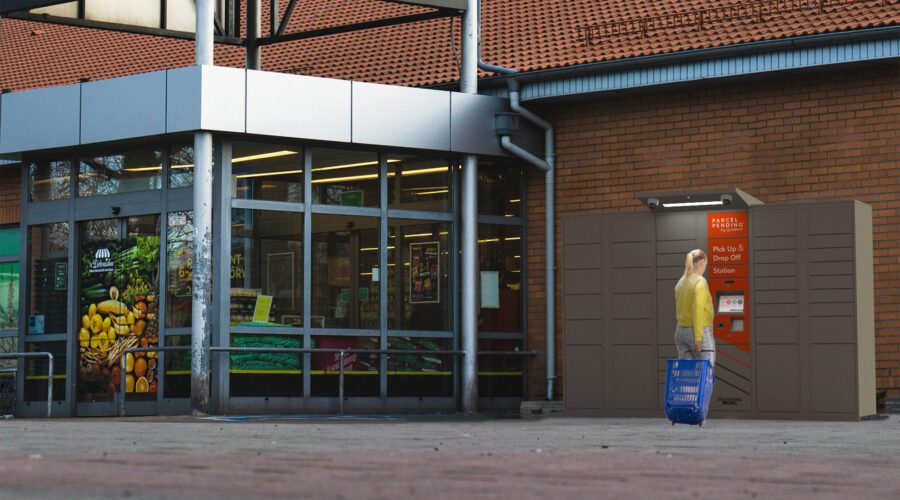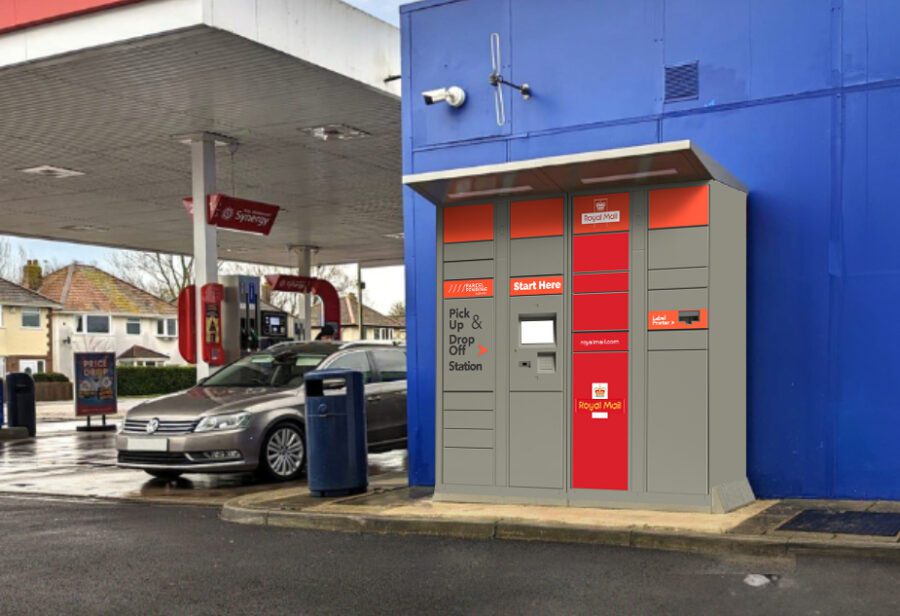
Courier
Understanding Courier Delivery Process Flow
Written by: Parcel Pending
6 Min Read
Published: September 30, 2021
Updated: March 28, 2023
The explosion of eCommerce has led to related delivery logistics issues: how to get goods to customers quickly, securely, cost-effectively, and with transparency throughout the process. The first step in solving the problem is understanding the courier delivery process flow.
Welcome to Personalized Logistics
Along with customer expectations for an omnichannel shopping experience comes the expectation for omnichannel delivery. These and other omnichannel trends have emerged from customers wanting what they want, when they want it, and where they want it. In essence, shoppers have voiced their preference for “personalized logistics” – the option to receive goods from retailers at physical storefronts – via store lockers, locker hubs, or curbside pickup – or by shipping goods directly to their home or office.
Fast, Flexible, and Free Delivery is Crucial to Consumers
If, for example, a shopper changes their delivery method from in-store pick-up to shipping to their home, a variety of changes ensue.
For the retailer, the logistical shift automatically increases the cost of delivery. Target estimates, for example, that it costs an average of 40% less when shoppers pick up their orders curbside or in stores, compared with shipping from a warehouse1. Further, labeling, packaging, and courier delivery are now additional steps between the goods leaving the warehouse and arriving at the customer’s doorstep.
The biggest issue, of course, is lack of chain of custody transparency. Both customers and retailers want to track their goods at all times and places. In fact, 83% of consumers expect regular communication about their purchases and where their shipment is throughout the shipping process2. Taking it a step further, only 15% of US shoppers stated that delivery speed met their expectations demonstrating the service gap. And, in a recent study, 53% of consumers said they would not purchase from a retailer if they didn’t know when their package would be shipped3.
Clearly, winning over consumers requires exceeding their service expectation by communicating early and often. In fact, same day delivery is now the gold standard with over 56% of shoppers aged 18-34 expecting it and 60% willing to pay for it4! Plus, over 25% of consumers would abandon an online shopping cart if same day delivery wasn’t available.
Final Mile Delivery is Key
Final mile delivery is the step in the shipping process wherein a parcel reaches its final destination – typically the customers’ hands – via a retail locker, their mailbox, or the customer’s doorstep. It’s ironic that this shortest leg of the entire shipping process is also the most crucial.
Introducing Lockers Hubs: Open Network Community Lockers
Most smart lockers are installed and owned by one party: a retailer allowing for in-store pickup via retail lockers (such as Buy Online, Pick-up In Locker or BOPIL® by Parcel Pending), a multifamily community providing residents with secure package delivery via smart lockers, or a university campus utilizing lockers for easy retrieval of books, documents, keys, and other campus essentials. Community-wide lockers, however, are carrier agnostic systems that can be used by any retailer, carrier, or recipient and typically placed on public property. These Locker Hubs are emerging as a smarter logistics solution that speeds up delivery times, increases parcel visibility, and even reduces emissions.
To test the theory that lockers boost efficiencies and decrease truck congestion and pollution, Parcel Pending by Quadient entered into a pilot project with the University of Washington and its Urban Freight Lab. It required the participation of two carriers (UPS and the United States Postal Service), property managers at the Seattle Municipal Tower (CBRE), the Seattle Department of Transportation, and building tenants. The goal was to tackle how to handle not just the “final mile” of package delivery, but what is termed the “Final 50 Feet”- getting the parcel to the customer’s doorstep.
The results were astounding5!
- Total delivery times plummeted 78% as compared to floor-to-floor and door to door delivery.
- There were zero failed deliveries to the lockers as compared to seven in the traditional delivery model.
- Dwell time was significantly reduced (the time a truck is parked in a loading zone) reducing traffic and emissions.
“In short, we’ve proven that lockers are a good solution for some of our urban freight challenges and should be part of our solutions toolkit” concluded Dr. Anne Goodchild, Founding Director, Supply Chain Transportation & Logistics Center, and Professor of Civil and Environmental Engineering at the University of Washington.
This study was so insightful that Parcel Pending has partnered again with the Urban Freight Lab in a new research project to determine if the results are repeatable6. Specific goals are to reduce parking-seeking behavior by 20%, reduce truck dwell time by 30%, and increase commercial efficiency with its use of alley and curb occupancy.
Locker Hubs as the Secret Weapon in Tracking & Chain of Custody
Although environmental benefits are important, the true value of community-wide locker hubs is their use in boosting tracking and security for retailers, consumers, and couriers. Since these hubs can integrate multiple tracking platforms into one application, all parties receive frequent and consistent communication.
And, if couriers tie-in their back-end system with the hub application, the consumer can change an item’s final delivery location in transit without compromising on tracking updates from the courier service or the delivery’s ultimate security.
When the customer order arrives, the locker hub automatically alerts recipients that they have a package and sends a unique PIN code or barcode for opening the locker. “Stale packages” are also tracked, ensuring maximum efficiency of each hub location.
Lockers Hubs Simplify the Returns Process
Customers returned an estimated $428 billion in products in 2020 according to the National Retail Federation (NRF)7. Of that, the lion’s share of returns resides with eCommerce with a whopping 30% return rate compared to only 8.9% for brick and mortar shopping8. When it comes to shoes and apparel, the return rates are even higher.
It’s almost as if eCommerce “shopping” has transformed into “discovery options” whereby consumers haphazardly fill their online shopping cart knowing full-well they’ll return a significant quantity. As Kate Reidel, Parcel Pending’s SVP of Business Development, explains: “Pandemic consumers who went online to shop for clothes often resorted to bracketing, buying multiple sizes, since they didn’t know exactly what they’d need. That exacerbated the expense of managing returns.”
Labor costs for a return via smart lockers are almost negligible. Further, a typical return via a smart locker takes the customer less than 30 seconds and 92% of consumers will buy a product again if the returns process is easy!
With lockers, the entire returns process is fast and efficient. Customers can initiate the return via mobile app or online and return the product via selecting “drop off” at the lockers, scanning or entering their return barcode, and then placing it in a locker. Typically, customers will also automatically receive an email confirming that their return was received.
Community lockers hubs are the future for safe, secure, and transparent parcel delivery, especially for urban areas. To learn more about how lockers can be a benefit for your area, reach out to a Parcel Pending by Quadient customer service representative.
Sources:
- Kapner, Suzanne. The Wall Street Journal. Covid-19 Rewrote the Rules of Shopping. What’s Next?. (2021, March 12). https://www.wsj.com/articles/covid-19-rewrote-the-rules-of-shopping-what-is-next-11615561232.
- LivePerson. (2013, January 30). Global survey reveals that 83% of consumers state a need for some form of support during their online shopping journey [Press release]. Retrieved from: https://www.prnewswire.com/news/liveperson%2C-inc./
- Lazar, Michael-Jon. ReadyCloud Suite. Ecommerce Shipping: The Definitive Guide. (2014, November 25). https://www.readycloud.com/info/ecommerce-shipping-and-fulfillment-the-definitive-guide.
- Saleh, Khalid. Invesp. The Importance of Same-Day Delivery – Statistics and Trends. (2021, April 11). https://www.invespcro.com/blog/same-day-delivery/.
- Urban Freight Lab. (2018). The Final 50 Feet Urban Goods Delivery System: Common Carrier Locker Pilot Test at the Seattle Municipal Tower [Report]. Retrieved from: https://depts.washington.edu/sctlctr/research-project-highlights/urban-goods-delivery-0
- Scruggs, Gregory. GeekWire. University of Washington studies future of urban package delivery with lockers and street sensors. (2020, October 2). https://www.geekwire.com/2020/university-washington-studies-future-urban-package-delivery-lockers-street-sensors/.
- The National Retail Federation. (2021). Customer Returns in the Retail Industry 2020 [Report]. Retrieved from: https://nrf.com/research/customer-returns-retail-industry
- Saleh, Khalid. Invesp. E-commerce Product Return Rate – Statistics and Trends [Infographic]. (2021, April 11). https://www.invespcro.com/blog/ecommerce-product-return-rate-statistics/.



